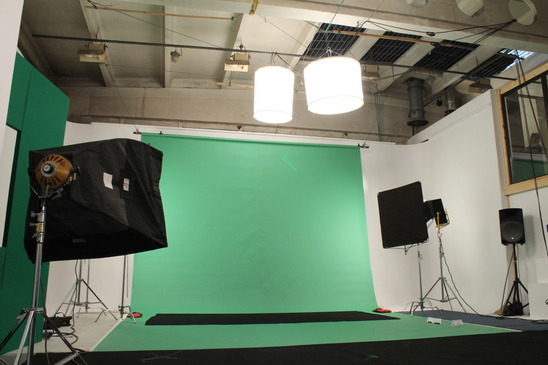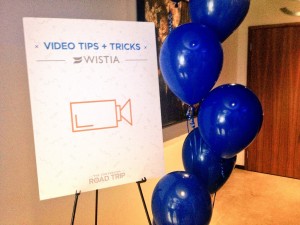For film and videography professionals, an extraordinary amount of time and labor is invested in finding the right location for each scene. These pros spend countless hours visiting, photographing, and surveying the layout of each possible location in hopes of finding “the one.” This process is repeated again and again until all places are secured and production starts rolling.
Many businesses that make their own videos never give much thought to location scouting. We understand your hurdles:
- Time
- Experience
- Cost
- Convenience
That video you shot in your office is more than adequate if it follows your video marketing strategy and your intended buyer personas find it valuable. However, you might be itching to add a greater diversity to your videos. Here’s a quick rundown on how to pick a location that suits your capabilities, budget, and story.
Refer to the script
Depending on your level of experience, you might have a rudimentary or fully fleshed out script. Treat it as your ultimate survival guide. The script dictates your casting, wardrobe, props, location, and pretty much everything else you can imagine. If your script lacks this level of detail, start adding these specifics and make sure you manage them closely. You’ll find a boost in production and post-production efficiency when everything’s in its right place.
Take lots of pictures
Remember to take lots of photos when scouting locations. You’ll be able to contrast and compare when weighing the positives of each destination. If you secure a setting that you don’t own, take pictures of everything before, during, and after you begin filming. These photos can be very helpful for any legal issues that arise in the unlikelihood things go south or the property is not as advertised.
Outside or inside?
Most businesses use their own physical spaces to shoot their videos. That strategy is perfectly acceptable as methods to save money/time and stream-line production. Just keep in mind where and when your story occurs. Variables like the weather, available sunlight, and bystanders can become tough to control if you’re planning on shooting outdoors. We still joke about the wind knocking over some light stands from last year’s Xpandu shoot.
What’s the layout?
- Is it easy to transport equipment around?
- Can you centralize operations from a “command center” so things run smoothly?
- Are you out of the way of other people?
If you’re bringing a hefty assortment of goods – stands, cords/cables, tripods, backdrops, lights – make sure you have clear pathways for people to navigate. If you’re shooting in your own office, notify everybody well in advance as to minimize interruptions and confusion.
How bright is it?
Understanding the lighting of the room, area, or building is very important for your video’s visuals and your production budget. Working indoors affords you greater control over the lighting even if you’re relying on your office’s LED panels or table lamps. Filming outside gives you the opportunity to play with natural light which can be extremely inconsistent due to shifting weather. If you plan accordingly and adapt, you may be able to capture really breathtaking shots with wide open aesthetics.
What’s it sound like?
- Is it naturally quiet?
- Can you hear people in other rooms?
- Can you hear noise from outside (sirens, traffic, pedestrians)?
Be wary of spaces that have severe echoing and lively sound effects. By lively sound effects, I mean spots that create a maddening amount of unintended noise (e.g. creaky floorboards, rumbling heaters) beyond your control. Rooms with heavy echoing may be a nightmare for you to correct in post-production. If you keep those audio levels as is, viewers may be turned off and annoyed by the effect.
Remember to record a minute or two of room tone for every space you occupy during shooting. “Room tone” is the ambient noise inherent in a particular setting. It’s the “sound of silence” according to LightsFilmSchool.com. It’s the swirl of the ventilation system in your office. It’s the faint ticking of a nearby clock. It’s the clicking of keyboards and the soft chatter of disembodied colleagues in the cubicles near yours. It’s the mundane symphony of where you are.
Why is room tone important? Abrupt changes in audio can disrupt the viewer’s engagement in your video. Room tone can provide a consistent bridge between the different takes you edit together to achieve a consistency that doesn’t distract viewers.
Is this legal?
There may be more legal flexibility in using a private commercial or residential property versus a public domain like a park or square as Sharon from NakedFilmmaker highlighted in the video above. In any case, it’s wise to consult a lawyer on topics such as likeness, liability, or securing required permits before spending tons of time and effort chasing dead ends. Remember, laws can vary based on geography so check the local municipality laws of your desired filming location.
Is it feasible?
- Is it a daily flat rate?
- Are there extra variable costs?
- Does the place need a lot of prep work or dressing before you start?
If you’re aiming for a place that falls outside your jurisdiction, you’ll probably end up negotiating an agreement on fees, liabilities, and time frame. Remember to factor in transportation (materials, personnel, distance) and time (preparing the location, actually filming the scene, and traveling) into your expenses.
If you do want to get serious about your video’s quality, find a location that serves your story. It’s much easier following that route than orchestrating a narrative around your place. Many times you’ll see a piece with grand setting – a sweeping landscape, a luxurious mansion – that sets certain expectations. We’ve all watched business videos featuring cool places that end up disappointing us. Though a spectacular location certainly helps your production values, it cannot compensate for crappy messaging and a lackluster offer.



Pingback: 8 Video Marketing New Year's Resolutions in 2015
Pingback: How to Avoid a Meltdown When Filming Videos in Your Office